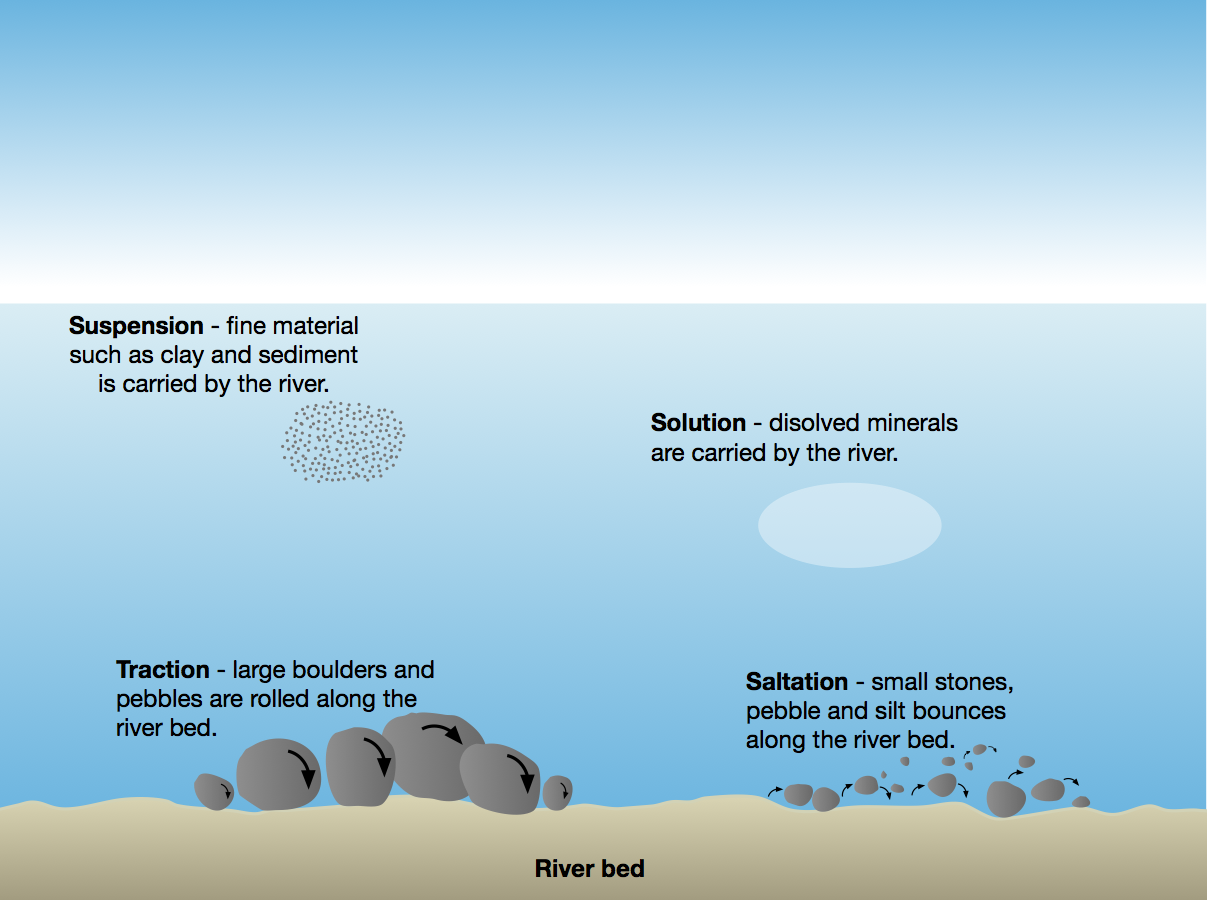Which of the following is the correct relationship between river velocity and sediment load. This measurement usually corresponds to the stream power and the width-integrated bed shear stress across section along a stream profile.

Faq Sediment Management India Water Portal
All rivers carry solid sediment and dissolve sediment.

. Up and down the river levees have limited the number and location of outlets for sediment-laden water to enter into shallow water area where land can easily build 1. As velocity increases so does the rivers capacity to carry a larger load. And these fine particles which are moved long distances at the velocity of the flowing water constitute the suspended load of the river.
The capacity of a stream or river is the total amount of sediment a stream is able to transport. Total amount of load a stream can carry. A bend in the river or a river entering a large body of water would cause a sufficient slowdown of the river such that sediment carried along in suspension will drop out of the rivers main.
Suspended sediment the kind of sediment that is moved in the water itself is measured by collecting bottles of water and sending them to a lab to determine the concentration. Total quantity of sediment carried in a river. Each stream has a capacity for what can be carried by the volume and velocity force of water being channelized.
Because the amount of sediment a river can transport changes over time hydrologists take measurements and samples as streamflow goes up and down during a storm. As velocity increases the amount of sediment carried by the river decreases. On average the river has a flow rate of about 300000 Ls.
Composed mainly of silt and clay. There is no definite relationship between velocity and sediment load. Streams of water carry sediment.
The finer particles silts and clays are carried in suspension by the turbulent action of flowing water. Stream capacity is the total quantity of sediment that a stream can carry move transport. _____ is the total quantity of sediment carried by a river.
Sediment load carried by the river in case the river is sediment-laden. The remaining component of the total sediment load is the dissolved load which is composed of chemical compounds taken into solution by. Particles suspended in the water.
Depending on the extent of detail proposed to be gone into the designer may need only information on the gross sediment yield from the catchment on the one extreme and complete information on the amount of wash load and the size distribution of the materials transported as bed. The life span of these structures depends on the amount of sediment carried by the river as the water flow. Low suspended sediment yields can be attributed to among other factors a regions low erosion rate.
Chemical solution and is derived from chemical weathering of minerals in rock sediment and soil in the drainage basin. Moves by the bouncing rolling or skipping of particles along the bottom of the channel. The type of sediment t transport that involves a series of leaps or bounces off the bottom of a streambed is _____ Saltation.
Note that capacity is greater than the load which is the amount of sediment carried by the stream. Additionally the total amount of sediment carried by the Mississippi and Atchafalaya Rivers has been reduced from 400 million tons per year to about 200 million tons per year 56. A _____ load is only the sediment carried in suspension.
Conclusion The general understanding of sediment transport in river channels is of great importance in construction of engineering structures like dams power plants bridge piers culverts bridges etc. Size of particles a. Similarly what is the average flow rate of a river.
This stream characteristic is measured by the size of the largest particle that a stream can move. Total amount of sediment carried by a river at any given time. Discharge _____ is the quantity of water flowing past a certain stream cross section per unit time.
Sediment yield is the total quantity of sediment transported from a watershed drainage basin at a given location in a given period of time. The _____ load is the total amount of sediment carried by a river.

River Processes Erosion Transportation And Deposition Hjulstrom Curve A Level Geography

0 Comments